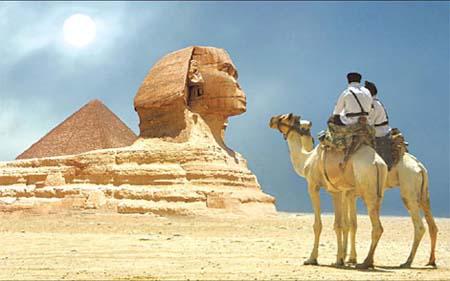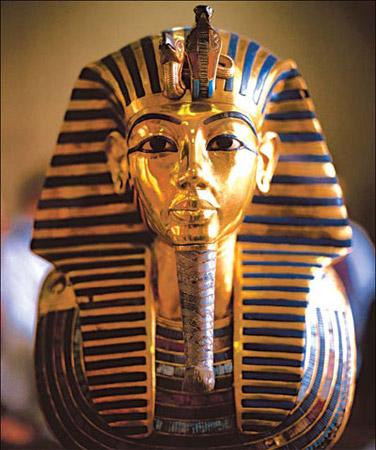Sands of time - feeling the time-honored Egypt
2010-03-12 11:29 BJT
Egypt is one of those must-see destinations, not just for the pyramids and Alexandria, but for the vibrant and confusing country it is today, Usha Sankar discovers.
 |
| The Great Pyramids of Giza, dating back more than 4,500 years, are the only one of the Seven Wonders of the Ancient World still standing today. Tuweimei / For China Daily |
No matter how many times you have seen images of the golden mask of boy-king Tutankhamen, come face to face with it in Egypt's Cairo museum, and you will suck in your breath.
It was on Nov 4, 1923, that British archaeologist Howard Carter stumbled on a stone at the base of the tomb of another pharaoh, Ramesses VI, in Luxor, that eventually led to a sealed doorway.
Then, on Nov 23, Carter found a second door and when he stuck his head through it, what he saw was to stun the world. Inside lay the great sarcophagus, or stone coffin, an enormous block of quartzite enclosing three chests of gilded wood, besides numerous other gold funerary objects.
A few months later, when a crane lifted its granite cover and one coffin after another was removed, Carter found a solid block of gold weighing 110 kg. In it was the mummy of the 19-year-old Tutankahmen, covered in gold, inlaid with lapis lazuli, turquoise, cornelian, green feldspar and that splendid funeral mask. And all this lay buried for more than 3,000 years.
Months after my trip to Egypt, I can relive the rush of emotion I felt and sense the reverential hush that descended on the crammed Cairo museum's Tutankhamen gallery.
Cairo, a dusty city of 20 million people, is an unremitting assault on the senses and a place where time seems to both stand still and rush into utter chaos. It is a place where the ancient and contemporary, conservative and experimental happily chug along on parallel tracks. It is infuriatingly disorderly and yet, utterly charming.
 |
| The golden mask of boy-king Tutankhamen on display at Cairo museum. Quanjing / For China Daily |
Take the Great Pyramids of Giza, sitting on the western edge of the city. Even as the setting sun silhouettes these gigantic structures against the great desert expanse, a muezzin's call for prayer floats over a gaggle of semi-finished apartment blocks abuzz with the activity of city life.
Dwarfed by these pyramids in the light of day, you can't but marvel at the genius of man. The largest of these, the Pyramid of Khufu that rises to an astonishing 450 meter, is estimated to contain more than 2.5 million blocks of limestone, each weighing more than 2 tons. That such a structure as this was erected in an age when the winch, pulley and wheel were unknown, defies the imagination.

 Mail
Mail Share
Share Print
Print


 Video
Video









 2009 China Central Television. All Rights Reserved
2009 China Central Television. All Rights Reserved